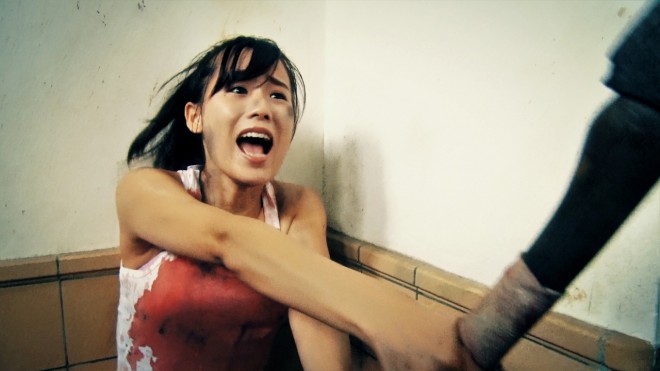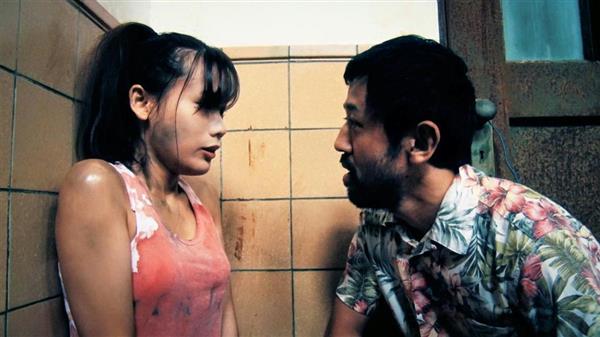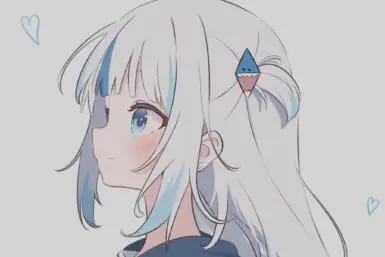Another zombie apocalypse story, a cast of relatively unknown actors, a micro-budget, and a director with just a few days to shoot his first ever feature-length film. One Cut of the Dead (Kamera wo Tomeru na!) didn’t seem like the kind of movie that would make much of a splash at the box office – yet somehow it has. In fact, it’s been a mega-hit, becoming the most talked-about movie of 2018 in Japan.
Initially targeting just 5,000 admissions, Shinichiro Ueda’s horror-comedy flick exceeded 2 million by the end of October and made 1,000 times its original budget before DVD sales. The film’s success has surprised everyone – including actress Yuzuki Akiyama who plays one of the film’s main characters, Chinatsu.
“I remember watching it for the first time with the rest of the cast and crew. By the end, everyone was up clapping and cheering,” Akiyama tells TW. “Usually when I’m in something I tend to focus on myself trying to reflect on what I did well and what I could have done better. This time I was engrossed by the whole thing. During shooting, there were occasions when I did wonder what was happening and how certain things were going to work. To then see it all come together felt magical.”
“Never in a million years do you think it’s going to be played in cinemas across the world”
According to Akiyama, all the people involved in the film partied through the night following the screening, however, nobody was anticipating much in terms of sales. “It’s extremely rare for a low-budget independent movie to attract large audiences,” she continues. “Everybody involved was aware of that and we all handed out flyers, messaged friends, and used SNS to try and drum up support. You’re hoping that at least a few people might turn up to see it. Never in a million years do you think it’s going to reach out to so many and be played in cinemas across the world!”

A scene from “One Cut of the Dead”
The movie is divided into three succinct acts, the first of which is a 37-minute single take set in and around a creepy abandoned water filtration plant that the military supposedly used in the past to experiment on humans. A film within a film, it begins with Akiyama’s character Chinatsu trying to fend off her zombie boyfriend. Frustrated by her performance, director Higurashi (Takayuki Hamatsu) shouts “cut” on what is already the 42nd take of the scene. A break is called during which time real zombies appear. Bloody mayhem ensues with Higurashi insisting that the cameras keep rolling.
While it may sound like the kind of tired idea that’s been done umpteen times before, One Cut of the Dead is well worth sticking with for the twists and turns that follow. The second act changes pace and direction, bringing us back a month where we learn more about the characters and how the idea for the film came about. This sets things up nicely for the final phase, which mirrors the first but adds more depth to the cheesy jokes we saw earlier. It’s funny, innovative and at times heart-warming – and looks like it must have been a great deal of fun for the actors involved.
“Yes, it was very enjoyable but also pretty exhausting,” says Akiyama with a smile. “The location felt like a training camp. There were six people sleeping in each room at a nearby inn. At the site, we could only shower using a watering can. The shoot began at six and we had to be fully focused from the outset as there was limited time to get that one uninterrupted shot right. The pressure was on and issues such as the weather and [fake] blood splattering on camera lenses made things more difficult. Despite this everyone remained positive, especially Ueda who was a bundle of energy throughout. Even when it was raining, he kept reassuring us that the sun would come out soon.”
The film was completed in just eight days in June 2017. Five months later it was given a six-day run at a Tokyo arthouse theater with an 84-seat capacity. For most financially restricted independent films that’s about as good as it gets. One Cut of the Dead, however, was destined for bigger and better things.
Following a raucous standing ovation at the 20th Udine Far East Film Festival, momentum started to build. By the height of the summer last year it was playing at around 200 cinemas nationwide and had been sold internationally to countries such as South Korea, the U.K., and Germany.
“The thought of my face being seen in places that I’ve never been to is just unbelievable,” says Akiyama. “From a personal perspective, the movie has completely changed my life. I’ve been working more on TV, people are recognizing me on the street, and I’ve even received many messages from abroad, though I can’t read what they say. [Laughs] Fans who’ve been [with me] from the early days of my career have also written to express their joy that, after 10 years, things seem to be really happening for me.”

A scene from “One Cut of the Dead”
Akiyama was just 15 when she started out in the entertainment industry. She worked as a model, stage actress, and alongside Minoru Kurata as part of the idol duo Apron Palace. “It was always fun,” she says, even though the pair would often be playing to only 10 or 20 audience members.
Her screen debut came as the female lead in the 40-minute film Dreaming Novelist (Koisuru Shosetsuka), which was made in 2011. It’s a heartfelt science-fiction comedy about a struggling mystery writer who is taken aback as he suddenly receives a visit from the main character in his book. The short movie was directed by the up-and-coming Shinichiro Ueda.
“My manager at the time predicted that Ueda would become a famous director even though that was only his second short film,” recalls Akiyama. “The first time I met him was at the audition. Afterward, he told me that he knew I would be getting the role as soon as I walked in. That gave me so much confidence. I wish all auditions were like that. We then worked together on the stage version and on another short film called Napolitan [released as part of Ueda’s short film omnibus collection in 2018]. In between, he would check in to see if I was doing okay. When I quit my first agency, he gave me lots of encouragement and arranged things so I could meet other directors. I can never thank him enough for everything he’s done.”
For One Cut of the Dead, Ueda selected the cast based on a series of workshops at the drama school Enbu Seminar. The characters were developed based on the skill sets of the actors. As Akiyama was too busy to join the auditions, Ueda asked her if she would be a special guest for the film. Her response was immediate.
“Yes, please,” she says, laughing. “Around that time, I’d turned down some stage productions in the hope of getting roles in movies or dramas, so it worked out perfectly.”
The film has massively boosted Akiyama’s career. Magazine and commercial offers have been flooding in. She landed a key role in a two-hour special of the popular drama The Woman of the S.R.I. (Kasouken no Onna) and has appeared as a guest on several talk shows. After the initial excitement, the Saitama-born actress is now getting used to meeting celebrities, though admits to being blown-away when comedian Sanma Akashiya told her he was a fan of the movie.
“So many incredible things have happened over the past 12 months and it’s all because of One Cut of the Dead,” says Akiyama. “I’ve been given this great opportunity to kick-on with my career and I can’t afford to waste that.”









